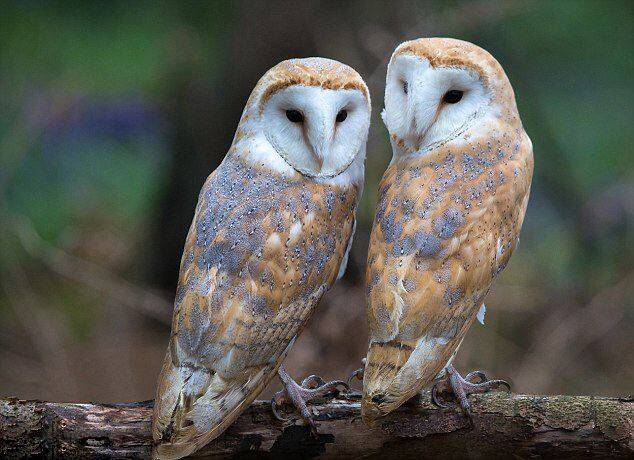Tyto alba
IUCN
LCBasic Information
Scientific classification
- name:Tyto alba
- Scientific Name:Tyto alba,Barn Owl,Monkey-faced eagle, Monkey-headed eagle
- Outline:Raptor
- Family:Strigiformes Owlidae Owl
Vital signs
- length:33-39cm
- Weight:About 1kg
- lifetime:About 10-15 years
Feature
A famous mouse catcher
Distribution and Habitat
Origin: Albania, Algeria, American Samoa, Andorra, Angola, Anguilla, Antigua and Barbuda, Argentina, Aruba, Australia, Austria, Bahamas, Bahrain, Bangladesh, Barbados, Belarus, Belgium, Belize, Benin, Bermuda, Bolivia, Bosnia and Herzegovina, Botswana, Brazil, Bulgaria, Burkina Faso, Burundi, Cambodia, Cameroon, Canada, Cape Verde, Cayman Islands, Central African Republic, Chad, Chile, China, Colombia, Comoros, Democratic Republic of Congo, Costa Rica, Cote d'Ivoire, Croatia, Cuba, Cyprus , Czech Republic, Denmark, Dominican Republic, Ecuador, Egypt, El Salvador, Equatorial Guinea, Eritrea, Ethiopia, Malvinas Islands, Fiji, France, French Guiana, Gabon, Gambia, Georgia, Germany, Ghana, Gibraltar, Greece, Guadeloupe, Guatemala, Guinea, Guinea-Bissau, Guyana, Honduras, Hungary, India, Indonesia, Iran (Islamic Republic of), Iraq, Ireland, Israel, Italy, Jamaica, Jordan, Kenya, Lao People's Democratic Republic, Latvia, Lebanon, Lesotho, Liberia, Libyan Arab Jamahiriya, Liechtenst
Appearance
The head is large and round, and the face is white, sometimes stained with brown, especially the eyes are brown first and the eyes are light brown. There is a brown or orange collar around the face plate, and the sides of the neck and shoulders are light brown with slight dark brown and white spots. The rest of the upper body is light gray, with brownish-yellow feather edges. Each feather is covered with light brown beetle fine spots, and there are white spots with black edges near the ends. The brown-yellow feathers on the wing coverts are more conspicuous. The outer feathers are light brown, the inner feathers are nearly white, and both the inner and outer feathers have small gray-black spots and horizontal spots. The tail feathers are the same as the flight feathers, but the horizontal spots are more prominent, usually with 4 light dark brown horizontal bands, and the ends are densely covered with gray-black insect-like spots and nearly white end spots. The lower body is white, some
Details
Barn Owl is a medium-sized bird with 32 subspecies.

The barn owl often moves alone. It usually lives in trees or caves during the day, and only comes out at dusk and night. Sometimes it appears in broken houses, cemeteries or other ruins. It flies fast and powerfully without making any sound, and appears shadowy in the dark. In addition, its cry is very unpleasant, much like the screams of people being tortured, so people often feel very scared of it. It mainly feeds on rats and hares, and is a famous rat catcher, catching about 3 rats a day and killing more than 1,000 rats a year. In addition, it sometimes hunts small and medium-sized birds, frogs and larger insects, and occasionally fishes like an osprey. When hunting, it adopts a sudden attack method and makes a sharp call at the same time, which makes the prey fall into extreme terror and surrender.
Barn Owls breed twice a year, the first from March to early June, and the second from September to December. They usually like to nest on buildings, whether on the ceiling of a house, in a hole in a wall, in a small warehouse or a grain storage hut, or sometimes in a tree hole or a rock wall hole. The nest is very simple, with only some dead grass in it. Each nest lays 2-7 eggs. The eggs are white, with a smooth surface and no spots. The female bird incubates the eggs. The incubation period is 32-34 days. The parents raise the chicks together. The chicks are covered with white down feathers and leave the nest after 9-12 weeks.
Listed on the IUCN Red List of Threatened Species (IUCN) 2016 ver 3.1 - Least Concern (LC).
Listed in the CITES Endangered Level of the Washington Convention: Appendix II, effective date: 1997
Listed in the Red Book of Endangered Animals in China: Rare, effective date: 1996
Listed in the second level of China's "National Key Protected Wildlife List" (February 5, 2021).
Protect wildlife and eliminate game.
Maintaining ecological balance is everyone's responsibility!








